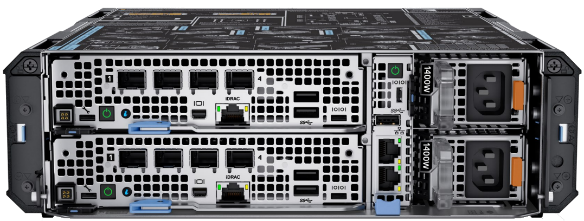

Dell Technologies vSAN ReadyNode Certification Guide Part II
Download PDFFri, 13 Oct 2023 14:50:27 -0000
|Read Time: 0 minutes
Dell and VMware collaborate to streamline and expedite the integration of software and hardware, enabling the delivery of tailored solutions for your business requirements. Leveraging our strong partnership, Dell vSAN Ready Nodes provides the latest versions of VMware vSphere®, VMware vSAN™, and VMware Cloud Foundation as soon as they become available. The introduction of VMware vSAN 8.0 - Express Storage Architecture, along with support for stretched clusters and expanded disaggregated storage capabilities, marks a significant milestone. In the ongoing development of vSAN 8 Update1, both vSAN OSA and vSAN ESA architectures are continuously improved and enriched with additional features, such as efficient data services and an optimized architecture for NAND Flash utilizing NVMe as the protocol bus. As vSAN 8 introduces groundbreaking updates that enhance performance and efficiency, this paper delves into the key factors that contribute to Dell vSAN ReadyNode as a differentiated but compatible certified hardware.
Dell vSAN Ready Nodes are x86 servers built on the Dell PowerEdge portfolio of Intel and AMD processors-based servers, which have been pre-configured, tested and certified for VMware Hyper-converged Infrastructure.
For more information on Dell vSAN ReadyNodes Certification, visit https://infohub.delltechnologies.com/p/dell-emc-vsanready-node-certification/.
vSAN OSA and ESA
vSAN Original Storage Architecture
vSAN is a software-defined storage solution built from the ground up for VMware vSphere Virtual Machines and containers. This solution abstracts and aggregates the server’s local disks in a vSphere cluster to create a storage solution that is provisioned and managed from the vCenter. As vSAN is embedded within the vSphere hypervisor, compute and storage for the VMs and containers are delivered from the same Dell PowerEdge server platform running the hypervisor.
vSAN original storage architecture consists of two tiers: a cache and a capacity tier. The cache tier performs read caching and write buffering, and the capacity tier functions as persistent storage. vSAN uses disk groups to manage the relationship between cache and capacity tiers. Each host contributing storage (either an All-Flash or a Hybrid Configuration of magnetic disks and flash drives) to a vSAN cluster will consist of at least 1-disk group that contains one cache device and between one and seven capacity devices. Whether hybrid or all-flash configuration, the cache drive must be a flash drive. vSAN uses the cache device for both a read/write cache (70%/30%) in a hybrid configuration, and in an all-flash configuration, the cache device is dedicated (100%) as a write cache.
VMware vSAN OSA ReadyNode configuration with Cache & Capacity Tiers
vSAN OSA AF-6 Dell PowerEdge R760 | ||
Generation: Intel Xeon Scalable (Sapphire-Rapids-SP) - Profile: AF-6 Series - Raw Storage Capacity: Up To 38.4 TB | ||
Components | Details | Qty |
ESXi Pre-Installed? | Yes |
|
System | PowerEdge R760 | 4 |
CPU | Intel Platinum 8470 2.00 GHz 52 Core | 8 |
Memory | DIMM,32GB,4800,2RX4,16G, DDR5R | 64 |
Caching Tier | 800GB Solid State Drive SAS Mixed Use 24Gbps 2.5 inch Hot-Plug Drive | 16 |
Capacity Tier | 1.92TB SSD SATA 6Gbps 2.5in SE5031 | 80 |
Controller | HBA355i Front | 4 |
NIC | Intel(R) Ethernet 25G 2P E810-XXV OCP | 4 |
Boot Device | BOSS controller card + with 2 M.2 Sticks 240G (RAID 1) or higher | 4 |
Supported Releases | ESXi 8.0 U1 (vSAN 8.0 Update 1), ESXi 8.0 (vSAN 8.0), ESXi 7.0 U3 (vSAN 7.0 Update 3) | 4 |
Table 1. vSAN OSA ReadyNode Configuration
vSAN Express Storage Architecture
vSAN Express Storage Architecture is an alternative architecture that builds on the existing Original Storage architecture. Compared to OSA which is a two-tier architecture, the ESA architecture is single-tiered, optimized for high performance NVMe-based flash devices for both on-premises and cloud environments. Some of the structural changes include a new Log-Structured Filesystem-LFS, a write optimized log-structured object manager, a new native snapshot engine, and a new object format. Some of the achievements of the new capabilities are space efficiency of RAID 5/6 erasure coding with the performance of RAID-1, Adaptive RAID-5 erasure coding for space savings on clusters with as few as 3-hosts, HCI Mesh support for 10-client cluster, lower TCO by removing dedicated cache devices by using a single-tier, simplified management, and smaller failure domains by removing construct of disk groups. Customers can now choose the best architecture for their hardware while building new clusters with unprecedented levels of performance. Finally, vSAN Express Storage Architecture is available as new deployments, and an existing cluster cannot be upgraded to vSAN ESA.
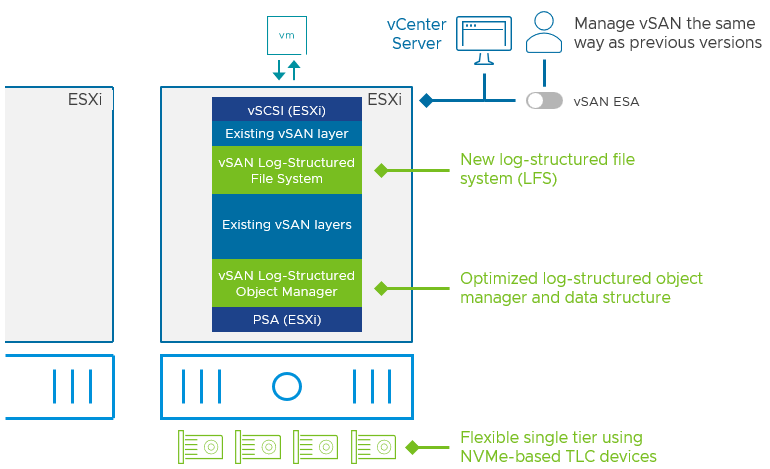
Fig.1. Integrating optional hardware optimized architecture in vSAN
VMware vSAN ESA ReadyNode configuration with a single tier
vSAN ESA AF-6 Dell PowerEdge R760 | ||
Generation: Intel Xeon Scalable (Sapphire-Rapids-SP) Profile: vSAN-ESA-AF-6 Raw Storage Capacity: Up To 51.2 TB | ||
Components | Details | Qty |
System | PowerEdge R760 | 4 |
CPU | Intel Platinum 8462Y 2.80Ghz 32 Core | 8 |
Memory | 64GB DDR-4, 3200, 2RX4 ,8G, DDR4, R | 16 |
Storage Tier | Dell Ent NVMe PM1735a MU 6.4TB | 8 |
NIC | Intel(R) Ethernet 25G 2P E810-XXV OCP | 8 |
Boot Device | BOSS controller card + with 2 M.2 Sticks 120G or higher (RAID 1) | 4 |
Supported Releases | ESXi 8.0 U1 (vSAN 8.0 Update 1), ESXi 8.0 (vSAN 8.0) | 4 |
Table.2. vSAN ESA ReadyNode Configuration
Allowable changes in vSAN ReadyNodes for both OSA and ESA
Components | vSAN OSA Modifiable | vSAN ESA Modifiable | vSAN OSA Guidance | vSAN ESA Guidance |
CPU | Yes | Yes |
|
|
Memory | Yes | Yes |
|
|
Caching Tier | Yes | NA |
|
|
Capacity Tier | Yes | NA |
|
|
Storage Device | NA | Yes |
|
|
Additional Certified IO Controller | Yes | NA |
|
|
Change in Storage Protocol | No | NA |
|
|
NIC | Yes | Yes |
|
|
Boot Device Controller | Yes | Yes |
|
|
Table.3. Allowable configuration changes in vSAN ReadyNodes
For detailed FAQs on VMware vSAN, visit https://core.vmware.com/resource/vsan-frequently-asked-questions-faq#section1.
Dell vSAN Express Storage Architecture ReadyNode Configuration
Components | Description | Quantity |
DellStar Quote No. | 18070029 |
|
ESXi Pre-Installed | Yes |
|
System | VSAN-RN R660 | 4 |
CPU | Intel® Xeon® Gold 6430 2.1G, 32C/64T, 16GT/s, 60M Cache, Turbo, HT (270W) DDR5-4400 | 2 |
Memory | 32GB RDIMM, 4800MT/s Dual Rank, RDIMMs | 16 |
Storage Tier | 3.2TB Enterprise NVMe Mixed Use AG Drive U.2 Gen4 with carrier | 10 |
NIC | Broadcom 57414 Dual Port 10/25GbE SFP28, OCP NIC 3.0 | 1 |
Boot Device | BOSS-N1 controller card + with 2 M.2 480GB (RAID 1) | 1 |
Table.4. An example of Dell vSAN ESA ReadyNode configuration from the Dell Configurator
VMware vSAN compatibility guide
Dell vSAN Ready Nodes for both OSA and ESA are certified hardware for building vSAN clusters. These ReadyNodes are ideal for building data center and cloud environments that deploy hyperconverged building blocks for varied scenarios. Dell Technologies provides multiple vSAN Ready Node options that are built on the Dell PowerEdge servers and support multiple vSAN editions and versions till the latest vSAN 8 U1. Dell Technologies provides a wide range of options for selecting the vSAN server model and storage controller as well as magnetic disks, SAS SSD, NVMe, NIC controllers, and accelerators, combined with VMware ESXi for both OSA and ESA configurations. There are multiple ReadyNode options available for different performance and workload requirements.
Dell vSAN OSA Guide > https://www.vmware.com/resources/compatibility/pdf/vi_vsan_rn_guide.pdf
Dell vSAN ESA Guide > https://www.vmware.com/resources/compatibility/pdf/vi_vsanesa_guide.pdf
Dell Technologies and VMware strongly recommend using tested and certified ReadyNodes that are validated to provide predictable performance and scalability when building a vSAN Cluster. Dell Technologies provides varied options for vSAN ReadyNodes for both Original Storage Architecture and Express Storage Architecture. To configure a Dell vSAN ReadyNodes listed for ESA solution, visit https://www.vmware.com/resources/compatibility/search.php?deviceCategory=vsanesa. On the configurator page 1, for ‘Choose Step 1’, select the vSAN ReadyNode Vendor as Dell. Next, choose the ‘vSAN ESA Server Model’ and processor vendor from a range of validated and certified 15G and 16G server models and processor from Intel or AMD. Next, choose the ‘ReadyNode Profile’ from AF-0 to AF-8. Once the required options are chosen, click on ‘Configure vSAN ESA ReadyNode.’ In Step 2, for ‘Configure’, select host configuration of sockets, cores, memory, storage type, number of storage devices, capacity, network speed, and number of network adapters. Next, click Step 3 to ‘Consume’. The configurator then builds the configuration chosen as per the requirements for the solution.
Note: There is only one storage tier in vSAN ESA configuration, unlike OSA configuration that requires two types of disks for cache and capacity tiers.
Dell Technologies PowerEdge 16th Generation vSAN ESA ReadyNodes.
Dell Technologies vSAN ESA Ready Nodes | ||||||||
Server | PowerEdge R660  | PowerEdge R760 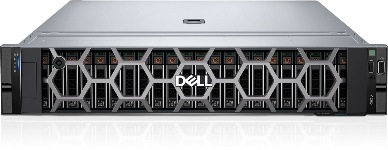 | PowerEdge R760xa 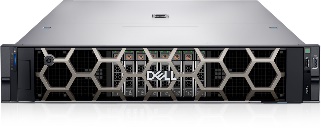 | |||||
CPU | 2 Sockets, 72 Cores Intel Xeon Scalable (Sapphire Rapids-SP) | 2 Sockets, 72 Cores Intel Xeon Scalable (Sapphire Rapids-SP) | 2 Sockets, 32 Cores Intel Xeon Scalable (Sapphire Rapids-SP) | |||||
Memory | 1024 GB 32 DDR5 DIMM slots, supports RDIMM 8 TB max, speeds up to 4800 MT/s | 1024 GB 32 DDR5 DIMM slots, supports RDIMM 8 TB max, speeds up to 4800 MT/s | 512 GB 32 DDR5 DIMM slots, supports RDIMM 8 TB max, speeds up to 4800 MT/s | |||||
Storage | 10 x 6.4 TB Dell U.2 Ent NVMe PM1735a MU 6.4 TB [3 DWPD] | 16 x 6.4 TB / 24 x 3.2 TB Dell Ent NVMe CM6 MU 6.4 TB [3DWPD] Dell U.2 Ent NVMe P5620 MU 3.2 TB [3 DWPD] | 6 x 3.2 TB Dell Ent NVMe CM6 MU 3.2 TB [3DWPD]
| |||||
Network Speed Host NIC | 2 x 100 Gb
1 | 2 x 100 Gb
1 | 1 x 25 Gb
1 | |||||
ReadyNode Profile
Available Profiles | AF-8
AF-0, AF-2, AF-4, AF-6 | AF-8
AF-0, AF-2, AF-4, AF-6 | AF-2
AF-0 | |||||
|
|
|
| |||||
Server | PowerEdge R6615  | PowerEdge R6625  | PowerEdge R7615  | PowerEdge R7625  | ||||
CPU | 1 Socket, 64 Cores AMD EPYC Genoa | 2 Sockets, 128 Cores AMD EPYC Milan | 1 Socket, 48 / 64 Cores AMD EPYC Genoa | 2 Socket, 128 Cores AMD EPYC Genoa | ||||
Memory | 768 GB 12 DDR5 DIMM slots, supports RDIMM 3 TB max, speed up to 4800 MT/s | 768 GB 24 DDR5 DIMM slots, supports RDIMM 6 TB max, speeds up to 4800 MT/s | 768 GB 12 DDR5 DIMM slots, supports RDIMM 3 TB max, speeds up to 4800 MT/s | 768 GB 24 DDR5 DIMM slots, supports RDIMM 6 TB max, speeds up to 4800 MT/s | ||||
Storage | 10 x 6.4 TB Dell U.2 Ent NVMe P5620 MU 6.4 TB [3 DWPD] | 7 x 6.4 TB Dell U.2 Ent NVMe P5620 MU 6.4 TB [3 DWPD] | 16 x 6.4 TB / 3.2 TB Dell U.2 Ent NVMe PM1735a MU 6.4 TB [3 DWPD] Dell U.2 Ent NVMe P5620 MU 3.2 TB [3 DWPD] | 14 x 3.2 TB Dell U.2 Ent NVMe PM1735a MU 6.4 TB [3 DWPD] Dell Ent NVMe CM6 MU 3.2 TB [3DWPD] Dell U.2 Ent NVMe P5620 MU 3.2 TB [3 DWPD] | ||||
Network Speed Host NIC | 2 x 25 Gb
1 | 2 x 25 Gb
1 | 2 x 25 Gb
2 | 2 x 25 Gb
2 | ||||
ReadyNode Profile
Available Profiles | AF-6
AF-0, AF-2, AF-4 | AF-6
AF-2 | AF-6
AF-0, AF-2 | AF-6
AF-0, AF-2 | ||||
vSAN ESA ReadyNode Hardware Guidance
When choosing the hardware, it is important to define the workload profile requirement for the use case. Once this is done, filter and search ReadyNode offerings to determine the approximate configuration that meets the defined requirement. Finally, choose the vSAN ESA ReadyNode aligned with the selected profile.
Description | vSAN-ESA-AF-0 | vSAN-ESA-AF-2 | vSAN- ESA-AF-4 | vSAN- ESA-AF-6 | vSAN- ESA-AF-8 | vSAN-ESA-AF-High- density |
Node Capacity (TB) (Min) | 3.2 | 15 | 20 | 40 | 60 | 100 |
CPU (#cores) per Node (Min) | 16 | 32 | 40 | 48 | 56 | 48 |
Memory (GB) (Min) | 128 | 512 | 512 | 768 | 1024 | 768 |
Number of storage devices (Min) | 2 | 4 | 4 | 4 | 4 | 4 |
Device Endurance | 1 DWPD or higher | 3 DWPD | 1 DWPD or higher | |||
Network (GbE) (Min) | 10 | 25 | 25 | 50 | 100 | 50 |
Device Guidance
Device Type and Protocol: NVMe TLC. The vSAN ESA ReadyNode is certified with NVMe and allows no change to the device type.
SSD Performance Class: Class F or higher, (Class F (100000 - 349999 WPS), Class G (350000+ WPS))
Endurance Class:1 DWPD or higher
Capacity:1.6TB or higher
Sizing Assumptions Used For vSAN ESA ReadyNode Profiles
Network: Dual port NIC recommended for redundancy.
Device Capacity: The capacity point is for guidance only. You can choose different capacity points as long as Node Capacity and Performance/Endurance classes are met.
Number of Storage Tier Devices: The number of Storage Tier devices has an impact on the performance of vSAN ESA. The minimum quantity is 4 devices per node. We recommend configuring more for better performance.
Dell vSAN Ready Nodes are built on trusted and proven PowerEdge Servers, speeding up the deployment with pre-configured, pre-tested configurations that are validated and certified to run VMware vSAN and help build a solution to meet an organization’s growing needs from the start. vSAN ESA ReadyNode solutions are based for different workload requirements, built for capacity and performance, and are available in the above form factors for entry, mid, and high demand workloads as specified in the Available ReadyNode profiles, from AF-0, AF-2, AF-04, AF-06 and AF-8.
Dell Technologies and VMware
As newer technologies and innovations evolve with VMware vSAN, Dell Technologies vSAN ReadyNodes ensure the pace is maintained with the newer generation of PowerEdge servers that are certified as ReadyNodes to run VMware’s latest vSAN software, providing the much-needed computing, networking, and storage requirements.
Dell Technologies and VMware provide business value to customers, delivering integrated solutions that accelerate the journey to digital transformation. Our partnership offers deep integration of VMware’s innovative technology with the unique combination of hardware and vSAN software while providing choice and flexibility to consume the latest technology. The Dell Technologies and VMware partnership provides a unique advantage, given that our infrastructure solutions are optimized for VMware solution stacks.
Author: Thomas MM, Technical Marketing Engineering, Linka Biaggi, Product Marketing
Related Documents

Dell PowerEdge XR4000 with VMware Edge Compute Stack for Edge Computing
Thu, 31 Aug 2023 17:42:58 -0000
|Read Time: 0 minutes

Overview
Enterprises want to build and operate applications that have low latency requirements to process and analyze real-time data, and they want to provide intelligence for smarter decision-making at the edge. However, they face many challenges: aging infrastructure, limited edge-computing resources, environmental factors, and lack of IT staff to deploy and support applications across many edge sites.
This document provides an overview of a combined edge platform built on Dell PowerEdge XR servers and VMware Edge Compute Stack to solve these challenges. It describes key use cases in retail, manufacturing, and other industries.
The PowerEdge XR server series is built to capture and process more data at the edge, with enterprise-grade compute abilities providing high performance with low latency for the edge. The XR servers can withstand unpredictable and challenging deployment environments. XR4000 is the new high-performance multi-node XR server, purpose-built for ultra-short depth and low power, and with flexible configurations. These configurations are also available on our Dell vSAN Ready Nodes.
- 1S Intel® Ice Lake Xeon-D® with integrated security and cyber-resilient architecture
- 355-mm-deep chassis with wall-mount option
- Rugged operating range from –5°C to 55°C (32°F to 131°F)
- Flexible 1U and 2U compute sled; self-contained 2-node for VMware vSAN cluster
Edge Compute Stack (ECS) is a fully integrated edge platform for customers with many edge sites. ECS empowers IT and OT to deliver intelligent real-time solutions, offering flexibility, consistency, security, and extensibility:
- Flexibility to run virtual and container applications, standard and real-time operating systems
- Consistent interoperability across edges, data centers, and clouds
- Security to protect applications, users, devices, and data against threats
- Open platform that offers component choices and extensibility
This document includes a combined XR4000 and ECS reference architecture validated and supported by Dell Technologies and VMware. It also provides sample configurations for customers and partners to use as a starting point to design and implement the combined edge platform.
Customer use cases
Key use cases for the solution are in the retail, manufacturing, and government sectors.
Retail
Retailers adapted to the pandemic with increased use of self-service checkout and new delivery mechanisms. They are deploying edge applications to improve customer experience and profitability:
- Self-checkout—Camera and computer vision solutions help prevent loss from missed scans and switched products or price stickers by instantaneously matching products with prices.
- Optimal shelf provisioning—Inventory tracking and data analysis solutions can optimize shelf-provisioning to increase sales.
- Immersive experience—Interactive mirrors in apparel stores give customers an immersive experience when they are trying out an item by providing additional colors or variations.
- POS—Virtualize and extend the point-of-sale life cycle and realize impactful ROI through faster innovation, a transformative customer experience, and proactive management of retail infrastructure.
The XR4000 and ECS platform provides high flexibility and performance to deploy and run these retail solutions while optimizing expensive retail space and meeting store environmental requirements.
Manufacturing
The Industry 4.0 movement is digitizing manufacturing for greater efficiency and flexibility. Manufacturers are deploying edge applications for the following use cases:
- IT/OT convergence—Virtualization of industrialized PCs and programmable logic controllers (PLCs) enabled skilled operators to work from anywhere with low latency while allowing OT and IT applications to run on the same hardware for greater efficiency.
- Predictive maintenance—Solutions that use smart sensor data can reduce machine downtime by 50 percent.
- Simulated manufacturing—Digital twin software creates a simulation running in parallel to physical machines to optimize operational efficiency.
- Quality control—Computer vision can spot defects to increase quality and yield.
The XR4000 and ECS platform provides a foundation for these solutions for machine aggregation and virtualization, OT/IT translation, industrial automation, and AI inferencing.
Government
Defense, law enforcement, and emergency response organizations have specific requirements for tactical and mobile edge deployments:
- Tactical edge—Military and civil defense organizations are implementing real-time analytics solutions using ruggedized form factors at the tactical edge.
- Mobile edge—Law enforcement and emergency response organizations are adopting vehicle-based mobile edge solutions.
XR4000 is highly portable and hardened for dusty, hot/cold operations. It is tested with NEBS Level 3 and MIL certifications. With ruggedized ATA-compliant compact and mobile systems from Dell OEM partners, the XR4000 and ECS platform is ideal for tactical and mobile edge workloads.
Features
Figure 1 illustrates the combined XR4000 and ECS reference architecture. It consolidates VMs and the Kubernetes management cluster in the central data center. It also includes self-contained 2-node vSAN and TKG Multi-Cloud (TKGm) clusters at every edge site. A purpose-built vSAN witness node XR4000w (Nano Processing Unit, shown in Figure 2) is integrated within several XR4000 chassis options, enabling a highly efficient and reliable edge stack. An optional SD-WAN virtual edge can provide optimal connectivity and additional security. The centralized VMware vCenter and TKG management cluster simplify vSAN and TKGm deployment at the edge sites.
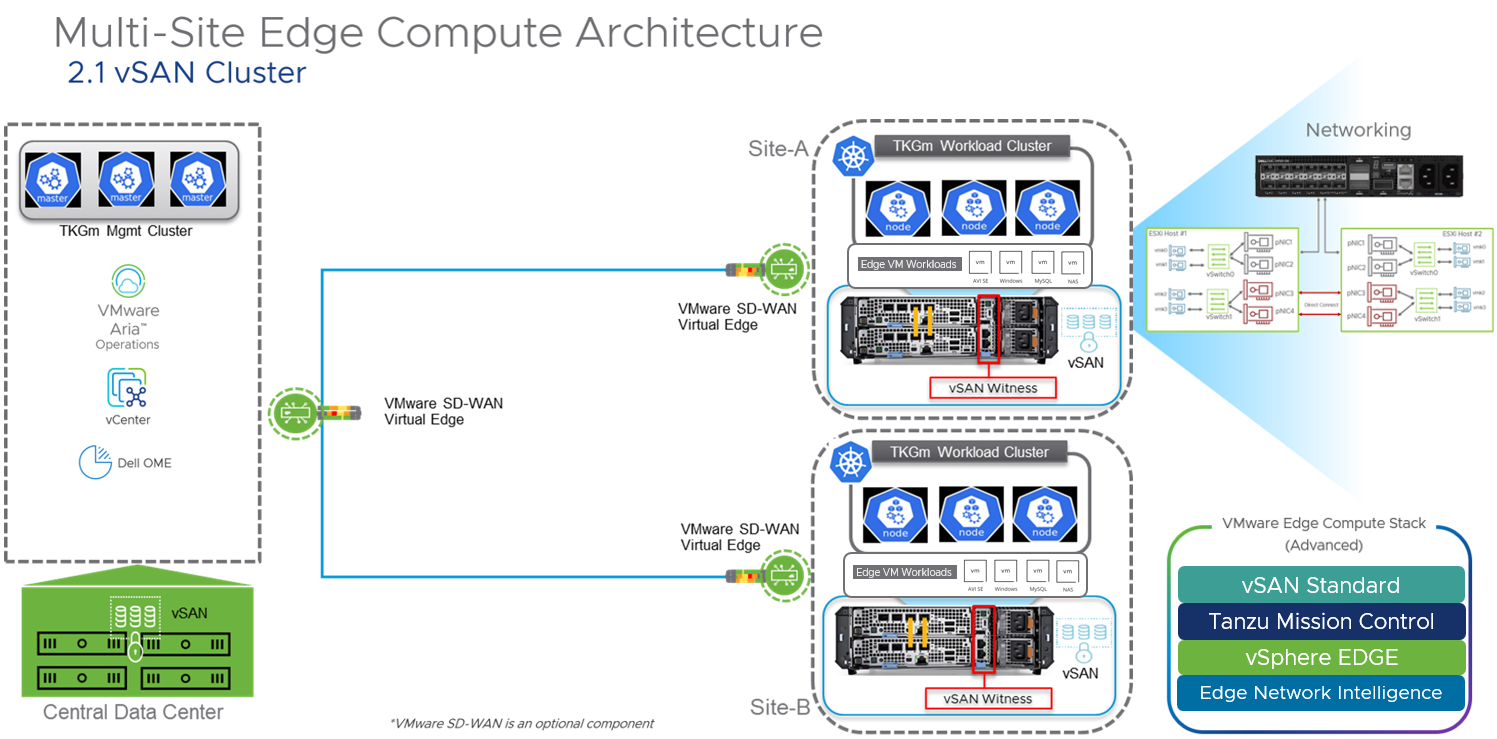
Figure 1. XR4000 and ECS reference architecture
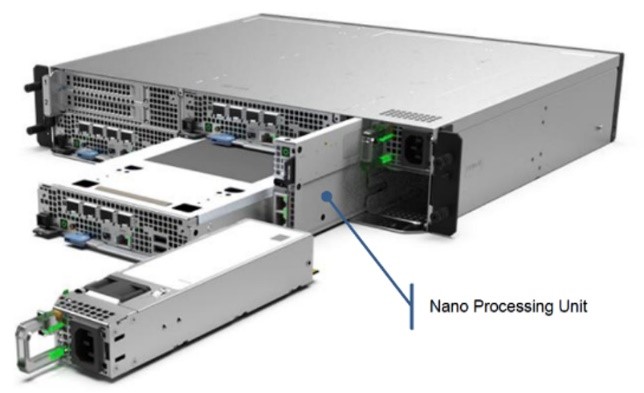
Figure 2. Nano Processing Unit
PowerEdge XR4000 and Edge Compute Stack configurations
Dell PowerEdge XR4000 is a rugged multi-node edge server available in two unique and flexible form factors. The “rackable” chassis supports up to four 1U sleds; the “stackable” chassis supports up to two 2U sleds. The 1U sled is provided for dense compute requirements. The 2U chassis shares the same “1st U” and common motherboard with the 1U sled but includes an additional riser to provide two more PCIe Gen4 FHFL I/O slots. Customers who need additional storage or PCIe expansion can choose a 2U sled option. All XR4000 chassis support both front-to-back and back-to-front airflow.
Sample configurations
The following table provides details for two sample configurations—one rackable and the other stackable.
Table 1. Sample configurations
| Rackable configuration 2 x 2U | Stackable configuration 2 x 1U |
|
|
|
Edge Compute Stack (ECS) | VMware ECS Advanced (vSphere Edge, vSAN Standard for Edge, Tanzu Mission Control Advanced), 1/3/5-year term license, up to 128 cores per edge instance | |
Chassis | Dell PowerEdge XR4000r 2U, 14 inches deep,19 inches wide | Dell PowerEdge XR4000z 2U, 14 inches deep, 10.5 inches wide |
Mounting options | Mounting ears to support a standard 19-inch-wide rack | Deployed in desktop, VESA plates, DIN rails, or stacked environments |
Power supply | Front port access, dual, hot-plug (1+1), 1400 W, RAF | |
Operating range | –5°C to 55°C (32°F to 131°F) | |
Witness node | 1 x Dell PowerEdge XR4000w, VMware Certified | |
Server
| 2 x Dell PowerEdge XR4520c sleds, VMware Certified | 2 x Dell PowerEdge XR4510c sleds, VMware Certified |
Total capacity of 2 x 2U sleds | Total capacity of 2 x 1U sleds | |
Security | Trusted Platform Module 2.0 V3 | |
CPU cores* | 32 cores (2 x 1S Intel Ice Lake Xeon-D 16 cores CPU) | |
Memory* | 256 GB (8 x 32 GB RDIMM) | 128 GB (8 x 16 GB RDIMM) |
Boot drive | 2 x BOSS-N1 controller card + with 2 M.2 960 GB - RAID 1 | 2 x BOSS-N1 controller card + with 2 M.2 480 GB - RAID 1 |
Storage* | 15.2 TB (8 x 1.9 TB, SSDR, 2E, M.2) | |
Network | 4 x 10 GbE Base-T or SFP for 4/8 core CPU; | |
GPU (optional) | 2 x NVIDIA Ampere A2, PCIe, 60 W, 16 GB Passive, Full Height GPU, VMware Certified | Not Applicable |
System management | iDRAC9, Dell OpenManage Enterprise Advanced Plus, integration for VMware vCenter | |
*In a High Availability (HA) 2-node vSAN cluster, for failover to work properly, total consumable CPU, Memory, and Storage for application workloads should not exceed the available resources of a single node.
Engage Dell and VMware
The edge platform built on Dell PowerEdge XR4000 server and VMware Edge Compute Stack aims to help retail, manufacturing, and government customer organizations build and operate applications that provide intelligence for smarter decision-making and deliver immersive digital experiences at the edge. The combined reference architecture and configuration examples described in this document are designed to help our joint customers in designing and implementing a consistent, flexible, secure, and extensible edge solution.
To learn more about the flexible configurations of the Dell XR4000 chassis and compute sleds, see PowerEdge XR Rugged Servers.
For more information about VMware Edge Compute Stack, see VMware Edge Compute Stack and contact the VMware team at edgecomputestack@vmware.com.
References
- Dell PowerEdge XR4000 Specification Sheet
- Dell PowerEdge XR4000r Chassis
- Dell PowerEdge XR4000: Multi-Node Design
- VMware SASE and Edge
- How is VMware Edge Compute Stack Accelerating Digital Transformation Across Industries?

Deliver Business Insights Faster with Microsoft SQL Server 2019 and VMware vSAN™
Tue, 17 Jan 2023 07:07:32 -0000
|Read Time: 0 minutes
Summary
This joint paper outlines a brief discussion on the key hardware considerations when planning and configuring a VMware vSAN™server configuration. Including sample PowerEdge server configurations for a starting deployment and quoting process.
Today’s enterprises need to move fast to stay competitive. For example, high- speed transactional processing solutions accelerate insights for financial trading or wholesale supply. High-speed analytics solutions enable users to quickly identify patterns in customer behavior or resource usage to inform better predictions and forecasts.
IT professionals are on point to deliver this high-performance data while reducing infrastructure costs. That is why IT pros choose Microsoft SQL Server 2019 running on VMware vSAN™.
They also choose Dell EMC™ PowerEdge™ rack servers configured with the latest generation of Intel® technologies. What are the benefits?
- Selecting SQL Server 2019 enables IT pros to deliver industry leading performancei.
- Adopting hyperconverged infrastructure (HCI) powered by vSAN, combined with VMware vSphere®, enables IT pros to manage compute and storage with a single platform that lowers infrastructure costs when compared to traditional three-tier architecturesii.
- Dell EMC PowerEdge servers running vSphere boost the orders per minute (OPM) of transactional databases more than 1.9 timesiii, and they allow users to complete 8x the analytics in 39 percent less timeiv, when compared to previous-generation servers.
Key Considerations
To get started, available server configurations for SQL server 2019 are shown in the “Available Configurations” section below. Key considerations include the following:
- CPU: High-frequency 3rd Generation Intel® Xeon® Scalable processors with 2.8 GHz clock speeds help optimize performance by enabling SQL Server 2019 locks to be released more quickly so multiple processes can access data faster. Additionally, Dell Technologies recommends using multiples of 24 CPU cores to make it easier to segment vSAN clusters and match the licensing structure of SQL Server 2019 Standard edition.
- Memory and Storage: The Base configuration can be set up with two storage groups and up to eight capacity drives, while the Plus configuration can be equipped with up to four storage groups and up to 12 capacity drives. In general, using more storage groups provides better write performance.
Dell Technologies recommends 1 TB of Intel® Optane™ persistent memory (PMem) 200 series per node. Intel Optane PMem creates a larger memory pool that enables SQL Server 2019 to run faster because data can be read from logical, in-memory storage, as opposed to a physical disk. For storage, Dell recommends using Intel Optane Solid State Drives (SSDs) for caching frequently accessed data. The Intel Optane SSD P5800X is the world’s fastest data center SSDv. PCIe® Gen4 NAND SSDs are recommended for the capacity tier.
- Networking: The configuration specifies Intel® Ethernet 800 Series network interface controllers (NICs) with Remote Direct Memory Access (RDMA), a hardware-acceleration feature that reduces the load on the CPU. Intel Ethernet 800 Series NICs start at 10 gigabit Ethernet (GbE) and scale up to 100 GbE. With Intel Ethernet 800 Series NICs, you will notice faster data speed between vSAN clusters, which becomes more important as node counts grow.
Available Configurations
The Plus configuration includes more cores, memory, and storage to support more or larger SQL Server 2019 instances and provide better performance.
Configuratio nsvi | Base Configuration
Dell EMC™ PowerEdge™ R650 Rack Server, up to 10 NVMe® Drives, 1 RU | Plus Configuration
Dell EMC PowerEdge R750 Rack Server, up to 16 NVMe Drives, 2 RU |
Platform | Dell EMC™ PowerEdge™ R650 rack server supporting up to 10 NVMe drives (direct connection with no Dell™ PowerEdge RAID Controller [PERC]) | Dell EMC PowerEdge R750 rack server supporting up to16 NVMe drives (direct connection with no Dell PERC) |
CPUvii | 2 x Intel® Xeon® Gold 6342 processor (24 cores at 2.8 GHz) | 2 x Intel® Xeon® Platinum 8362 processor (32 cores at 2.8 GHz) or Intel Xeon Platinum 8358 processor (32 cores at 2.6 GHz) |
DRAM | 256 GB (16 x 16 GB DDR4-3200) | |
Persistent memoryviii | 1 TB (8 x 128 GB Intel® Optane™ PMem 200 series) | |
Boot device | Dell EMC™ Boot Optimized Server Storage (BOSS)-S2 with 2 x 480 GB Intel® SSD S4510 M.2 Serial ATA (SATA) (RAID1) | Dell EMC™ Boot Optimized Server Storage (BOSS)-S2 with 2 x 480 GB Intel® SSD S4510 M.2 Serial ATA (SATA) (RAID1) |
Storage adapter | Not required for an all-NVMe configuration | |
Cache tier drivesix | 2 x 400 GB Intel Optane SSD P5800X (PCIe® Gen4) or 2 x 375 GB Intel Optane SSD DC P4800X (PCIe Gen3) | 3 x 400 GB Intel Optane SSD P5800X (PCIe Gen4) or 3 x 375 GB Intel Optane SSD DC P4800X (PCIe Gen3) |
Capacity tier drives | 4 x (up to 8 x) 3.84 TB Intel SSD P5500 (PCIe Gen4, read- intensive) | 6 x (up to 12 x) 3.84 TB Intel SSD P5500 (PCIe Gen4, read-intensive) |
NIC | Intel® Ethernet Network Adapter E810-XXV for OCP3 (dual-port 25 Gb) | Intel Ethernet Network Adapter E810-XXV for OCP3 (dual-port 25 Gb) or Intel Ethernet Network Adapter E810-CQDA2 PCIe add-in card (dual-port 100 Gb) |
Learn More
Contact your Dell or Intel account team for a customized quote 1-877-289+-3355
Visit the Dell vSAN Configuration Options Getting Started
Download “Dell EMC vSAN Ready Nodes.” to learn about hyperconverged building blocks for VMware vSAN™ environments.
Download “Microsoft SQL 2019 on Intel Optane Persistent Memory (PMem) Using Dell EMC PowerEdge Servers” to learn about advantages of using Intel Optane PMem with SQL Server 2019.
i TPC. TPC-E webpage. http://tpc.org/tpce/default5.asp.
ii Forrester Consulting. “The Total Economic Impact™ of VMware vSAN.” Commissioned by VMware. July 2019. www.vmware.com/learn/345149_REG.html.
iii Principled Technologies. “Dell EMC PowerEdge R650 servers running VMware vSphere 7.0 Update 2 can boost transactional database performance to help you become future ready.” Commissioned by Dell Technologies. June 2021. http://facts.pt/MbQ1xCy.
iv Principled Technologies. “Analyze more data, faster, by upgrading to latest-generation Dell EMC PowerEdge R750 servers.” Commissioned by Dell Technologies. June 2021. http://facts.pt/poJUNRK.
v Source: 14 at: Intel. “Intel® Optane™ SSD P5800X Series - Performance Index.” https://edc.intel.com/content/www/us/en/products/performance/benchmarks/intel-optane-ssd-p5800x-series/.
vi The “Plus” configuration supports more or larger Microsoft SQL Server 2019 instances with higher core count CPUs and additional disk
groups that deliver higher performance.
vii Plus configuration: the Intel Xeon Platinum 8362 processor is recommended, but the Intel Xeon Platinum 8358 processor can be used instead if the Intel Xeon Platinum 8362 processor is not yet available.
viii Base and Plus configurations: Intel Optane PMem in Memory Mode provides more memory at lower cost.
ix Base and Plus configurations: The Intel Optane SSD P5800X is recommended, but the previous-generation Intel Optane SSD DC P4800X can be used instead if the Intel Optane SSD P5800X is not yet available.





